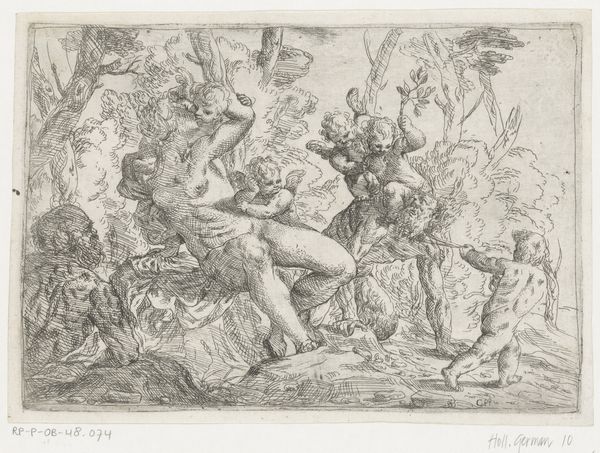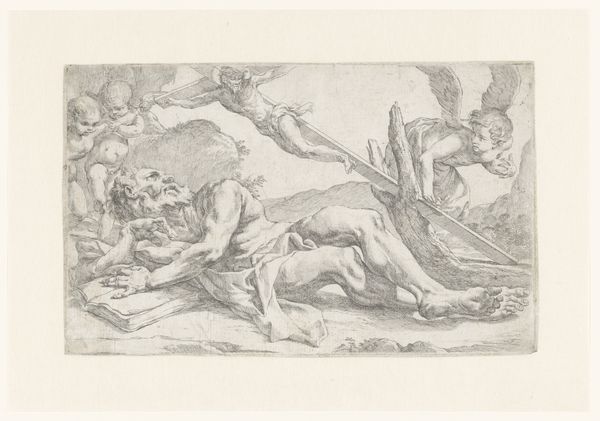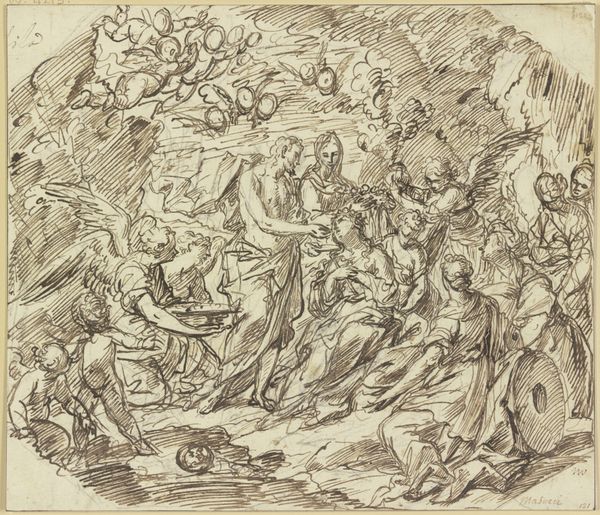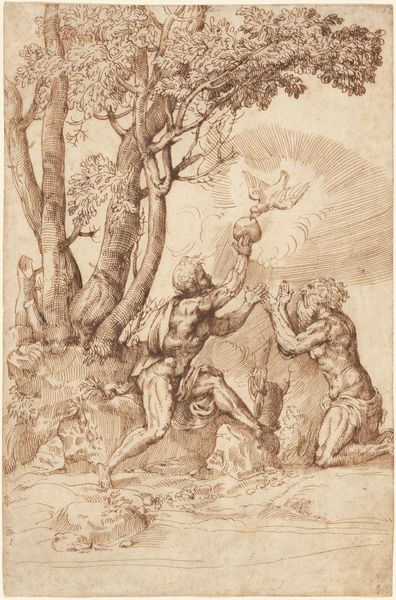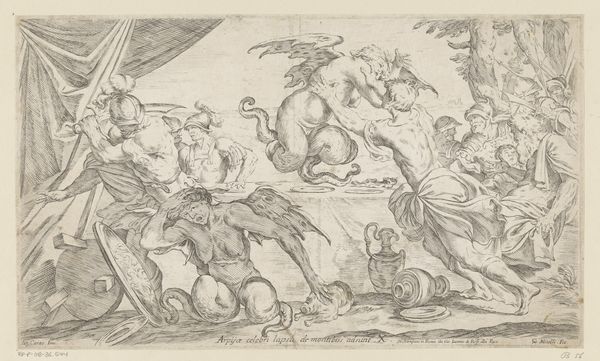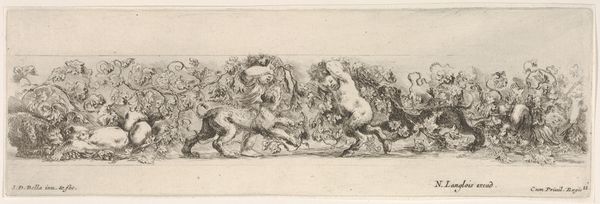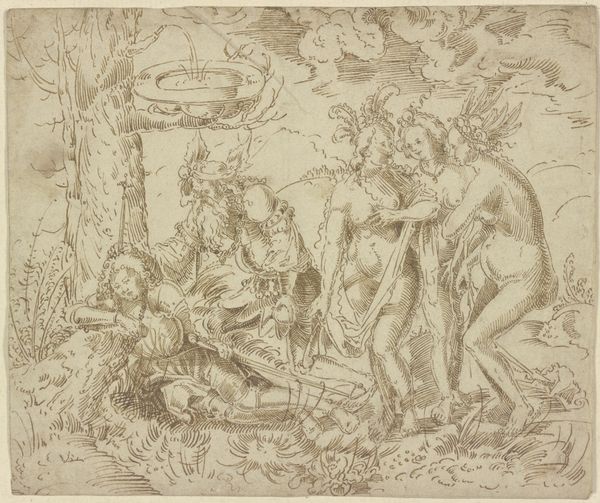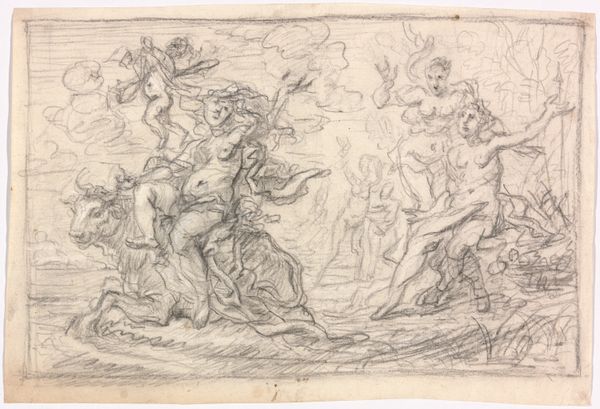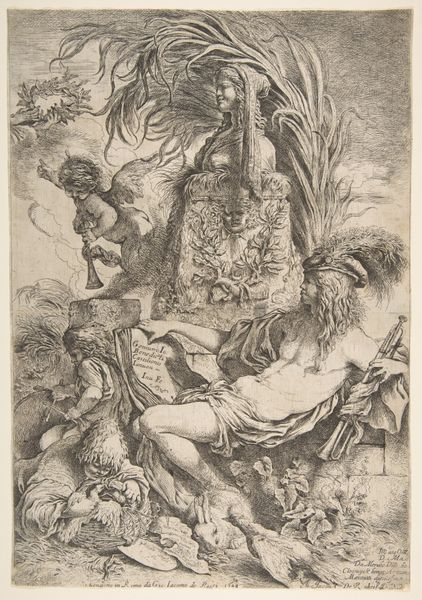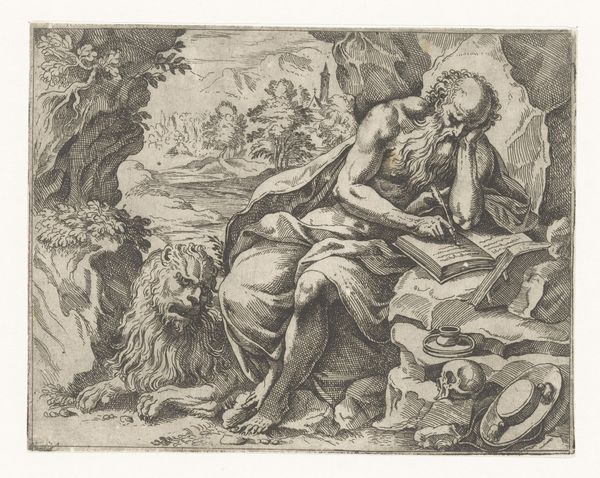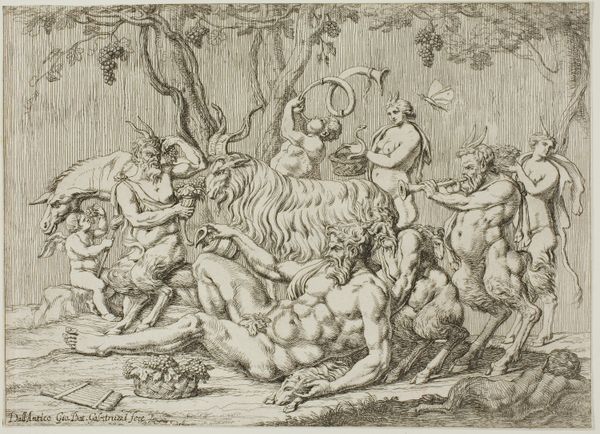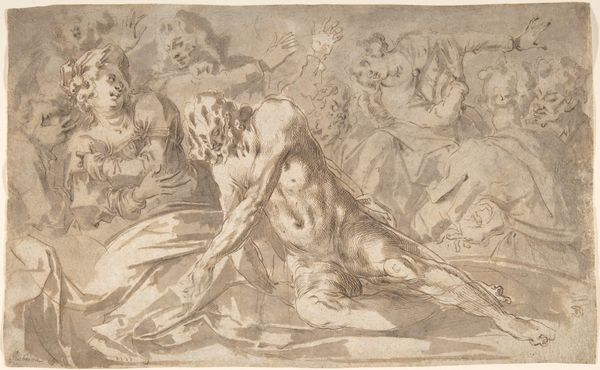
print, etching, engraving
#
ink drawing
#
baroque
#
pen drawing
# print
#
etching
#
landscape
#
figuration
#
history-painting
#
engraving
Dimensions: height 150 mm, width 194 mm
Copyright: Rijks Museum: Open Domain
Editor: This engraving from sometime between 1628 and 1659 by Giovanni Pietro Possenti, titled *Hercules Doodt de centaur Nessus*, really throws me for a loop! It looks so hectic, all these figures and textures jumbled together. How do you interpret this piece? Curator: Consider the context. Prints like these were essentially proto-mass media. The labor involved – the cutting of the plate, the inking, the printing – these processes made images and narratives like this accessible to a wider audience than paintings. How do you think the materiality of printmaking affects our understanding of this mythological scene? Editor: That's fascinating. So, because it's a print, the story of Hercules slaying Nessus becomes less about elite patronage and more about broader consumption? Did that influence what stories were chosen to be depicted? Curator: Precisely. Demand shaped the narrative. Mythology was popular. Think about the materials: the paper, the ink, the metal plate itself. These all speak to a system of production. Consider how the tools involved influence the line quality and overall aesthetic. Editor: I see what you mean. The scratchy lines and the stark contrast aren’t just artistic choices; they are, in some ways, a direct consequence of the engraving process itself and meant to be consumed on a mass scale. So, how might this connect with high versus low art distinctions? Curator: Think about it this way: engravings disseminated imagery, and by doing so, arguably democratized access to “high art” narratives. How does this challenge our assumptions about originality and value within artistic hierarchies? The reproduction inherently impacts our concept of the unique masterpiece. Editor: I never really considered that this was almost an early form of mass production and dissemination of information and stories. Thanks! Curator: Precisely. Examining the material realities and context broadens our understanding considerably.
Comments
No comments
Be the first to comment and join the conversation on the ultimate creative platform.
